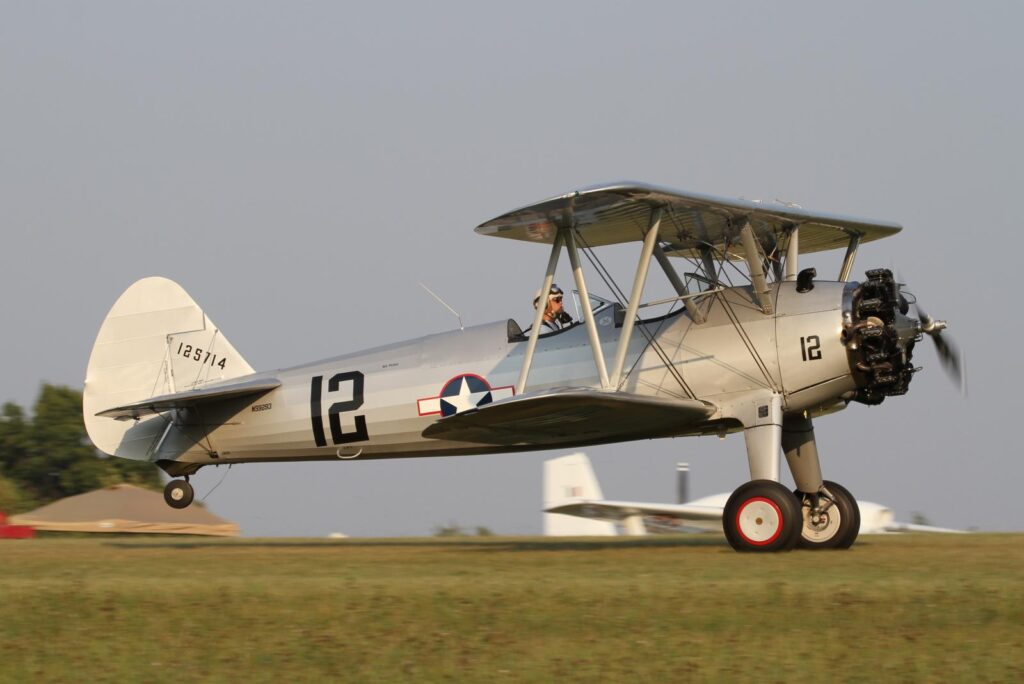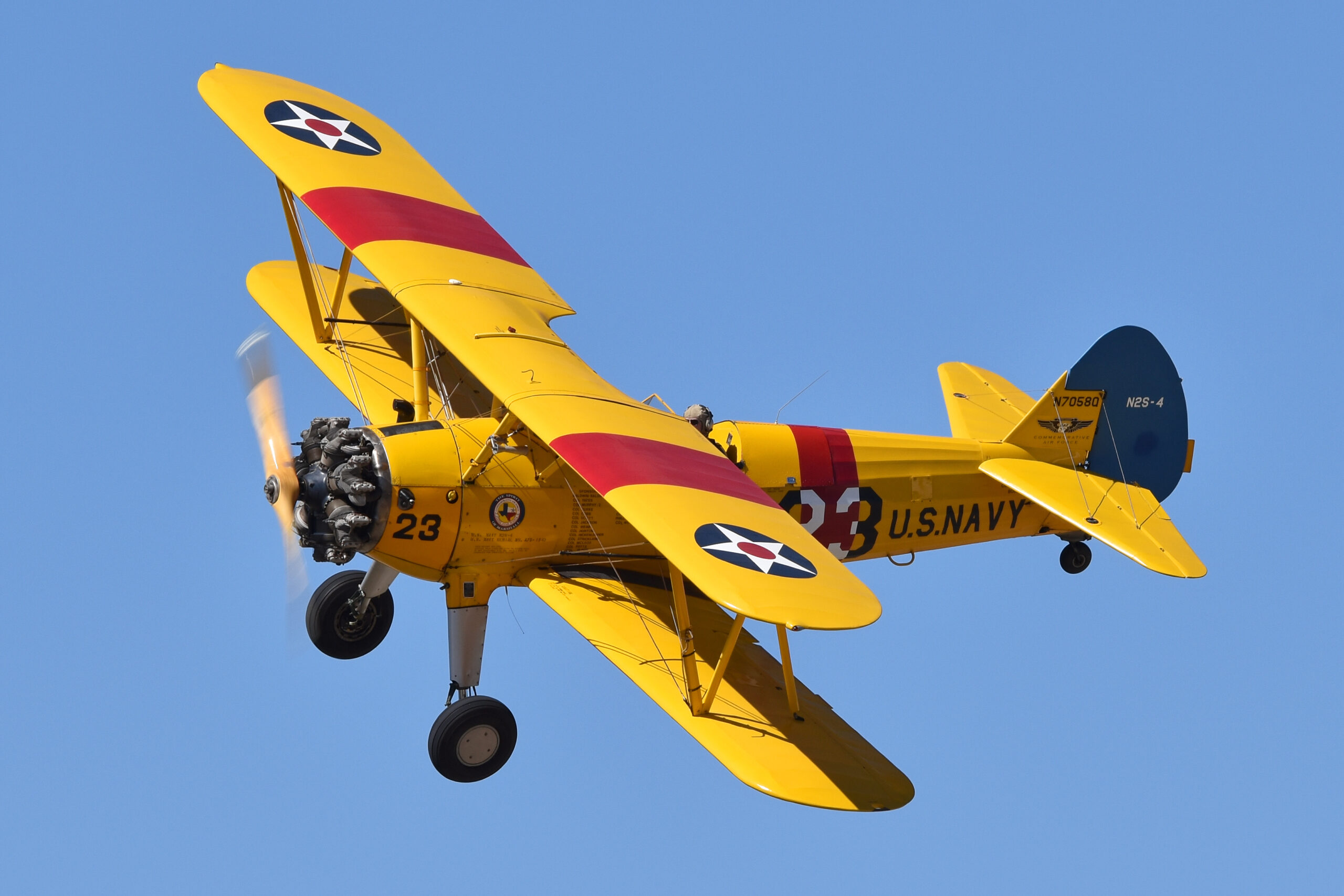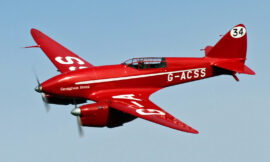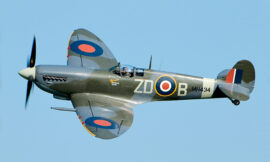The Boeing PT-17 Stearman is an iconic biplane trainer aircraft that played a crucial role in training Allied pilots during World War II. Known for its robust design, open cockpit, and distinctive biplane configuration, the PT-17 Stearman became synonymous with primary flight training in the United States and other Allied nations. It remains a beloved aircraft among aviation enthusiasts and collectors today.

Development and Design
The PT-17 Stearman was developed by the Stearman Aircraft Company, which was later acquired by Boeing. It was designed as a two-seat biplane trainer for the U.S. Army Air Corps (USAAC) and the U.S. Navy (USN) in the late 1930s. The aircraft was primarily constructed of wood with fabric covering, a common design feature for biplanes of that era. Its rugged construction and simple, straightforward design made it ideal for training purposes.
Powered by a radial engine, the PT-17 originally featured a Lycoming R-680-5 engine producing around 225 horsepower. Later models, designated PT-17A, PT-17B, and PT-17C, were equipped with more powerful engines, such as the Continental R-670 series, which provided up to 220 horsepower.
Performance and Specifications
The PT-17 Stearman had a wingspan of 32 feet 2 inches (9.8 meters) and a length of 24 feet 9 inches (7.5 meters). It had a maximum speed of approximately 124 mph (200 km/h) and a service ceiling of around 11,200 feet (3,400 meters). The aircraft’s open cockpit design allowed for excellent visibility, essential for flight training and instruction.
The biplane configuration provided the PT-17 with inherent stability and maneuverability, making it well-suited for teaching basic flight maneuvers, takeoffs, landings, and aerobatics. Its forgiving flight characteristics and relatively low operating costs contributed to its popularity as a primary trainer aircraft.
Operational History
The PT-17 Stearman became the primary trainer for thousands of U.S. and Allied pilots during World War II. It was used extensively in the United States as part of the Army Air Corps’ primary flight training program and by the U.S. Navy for naval aviation training. The aircraft was also provided to Allied nations through the lend-lease program, including Canada, the United Kingdom, and the Soviet Union.
In addition to basic flight training, the PT-17 was used for instrument training, formation flying, and introduction to advanced maneuvers. Its rugged design allowed it to withstand the rigors of training operations and prepare pilots for the more demanding operational aircraft they would fly in combat.
Variants and Post-War Service
Several variants of the PT-17 were produced, including specialized models for instrument training (PT-13D), floatplane versions (NS and N2S), and agricultural crop-dusting variants. After World War II, surplus PT-17 Stearmans became popular as civilian aircraft for crop dusting, aerobatic performances, and private flying.
The PT-17’s durable design and adaptability ensured its continued use in civilian aviation long after its military service. Many restored examples are still flying today, cherished by aviation enthusiasts and collectors for their historical significance and nostalgic appeal.
Legacy and Cultural Impact
The Boeing PT-17 Stearman left a lasting legacy as an iconic symbol of World War II aviation training. It played a vital role in preparing thousands of pilots for combat duty, contributing to the Allied war effort and the eventual victory in the war. Its distinctive appearance, with its biplane wings and radial engine, remains instantly recognizable to aviation enthusiasts worldwide.
The PT-17 Stearman’s legacy extends beyond its military service. It continues to inspire a sense of nostalgia and admiration among those who appreciate its role in aviation history. Restored PT-17s can often be seen at airshows and aviation museums, showcasing their timeless design and the enduring spirit of flight that they represent.
Conclusion
The Boeing PT-17 Stearman stands as a testament to the importance of primary flight training during World War II and the aircraft’s lasting impact on aviation history. Its rugged construction, versatile performance, and role in training Allied pilots make it a beloved and cherished aircraft among aviation enthusiasts. The PT-17 Stearman’s legacy continues to be celebrated today, reminding us of its significant contribution to Allied victory and its enduring place in the annals of aviation history.



